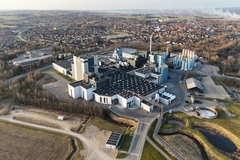
- Industry news
Industry news
- Category news
Category news
- Reports
- Key trends
- Multimedia
- Journal
- Events
- Suppliers
- Home
- Industry news
Industry news
- Category news
Category news
- Reports
- Key trends
- Multimedia
- Events
- Suppliers
Chr. Hansen Sees Growth in All Areas

21 Jan 2015 --- Food ingredients company Chr Hansen has announced growth in all its business areas in its Q1 2014/15 results.
With solid organic revenue growth of 9% in Q1 2014/15, Chr. Hansen has started the year well. The Cultures & Enzymes Division (7% organic growth) performed in line with long-term expectations and the Health & Nutrition Division (29%) delivered very strong growth albeit on weaker comparables. The Natural Colors Division (4%) grew below expectation.
Chief Executive Cees de Jong said: “The implementation of the Nature’s No. 1 strategy continues and efforts have accelerated in research & development within biological plant protection. The company has strengthened the organization in China to support its new go-to-market strategy for cultures and enzymes. The implementation of the new dedicated sales and application organization in the Natural Colors Division is on track and performance of the division is expected to improve during the year.”

“We reiterate our expectations for 2014/15 of organic revenue growth of 7-9% and an EBIT margin before special items above 26.5%,” he continued.
The company saw sales revenue of EUR 188 million, compared to EUR 171 million in Q1 2013/14, corresponding to organic growth of 9% • Operating expenses EUR 53 million, compared to EUR47 million in Q1 2013/14, while total research & development expenditures incurred EUR 13 million (6.8% of revenue), compared to EUR 11 million (6.7% of revenue) in Q1 2013/14.
Profit for the period was EUR 30 million, compared to EUR 29 million in Q1 2013/14 and negative free cash flow EUR 30 million, compared to a negative EUR 31 million in Q1 2013/14.
Claus Petersen, chief financial officer, told FoodIngredientsFirst that the company has had a good start to the year, largely due to successful organic growth in its two strongest divisions, Cultures & Enzymes and Health & Nutrition.
“Our two microbials businesses have seen exceptional growth. Cultures & Enzymes accounts for 60% of our business and it is here that we can really help our customers, by using our products to help them become more efficient and improve output. For example, we can help customers improve shelf life of final products or increase ripening times to increase yields.
“We also offer our customers the option to outsource their microbial dairy needs, which all expands our market and encourages organic growth,” he said.
Cultures & Enzymes Division revenue increased by 7% to EUR 118 million, corresponding to organic growth of 7%. The organic growth was mainly driven by strong growth in cheese cultures and enzymes. Fermented milk and meat cultures showed good growth while revenue from probiotic cultures was lower than in Q1 2013/14.
In the Health & Nutrition Division revenue increased by 35% to EUR 32 million, corresponding to organic growth of 29%. Both human and animal health products realized strong growth.
The Natural Colors Division saw Revenue increase by 3% to EUR 38 million, corresponding to organic growth of 4%. The FruitMax range of coloring foodstuff and carmine products delivered strong growth while revenue from anthocyanin products was lower than in Q1 2013/14.
Petersen said: “The only area in which we were disappointed was the Natural Colors division. Figures here are lower than we hoped and expected, largely due to the lack of growth from China, as well as the US.
“The US as a market is behind Europe in converting from synthetic to natural solutions, but the US consumer is asking for a natural alternative. The cost implications for the US food producer make it more expensive to convert, but Chr. Hansen is working at ways to reduce the difference in cost between synthetic and natural colours. We can do more to reduce unit costs in this area by optimising crops and improving milling techniques,” said Petersen.
By region, EMEA (Europe, Middle East and Africa) revenue increased by 8%, with organic growth of 10%. The organic growth was driven by strong growth in cheese cultures, enzymes and human health products. Fermented milk delivered solid growth while natural colors showed modest growth. Revenue from probiotic cultures for fermented milk was lower than in Q1 2013/14.
In the Americas (North and South America), revenue increased by 13%, with organic growth of 10%. The organic growth was driven by strong growth in cheese cultures, enzymes and natural colors. Revenue from probiotic cultures for fermented milk was lower than in Q1 2013/14.
The APAC (Asia-Pacific) region saw revenue increase by 8%, with organic growth of 6%. The organic growth was driven primarily by strong growth in human health products and cultures for cheese and fermented milk. Revenue from probiotic cultures for fermented milk and natural colors was lower than in Q1 2013/14.
Petersen concluded: “Looking to the future we can expect 7-9% growth for the group this year, and we are looking at 7-10% long-term growth. We will be investing meaningful amounts in providing plant protection solutions to the market, using bacteria as a natural solution. We can combine chemicals and bacteria in order to use fewer chemicals in crop protection, which will reduce costs and should increase yields and efficacy of product, all helping to reduce costs to our customers.”
By Kelly Worgan










